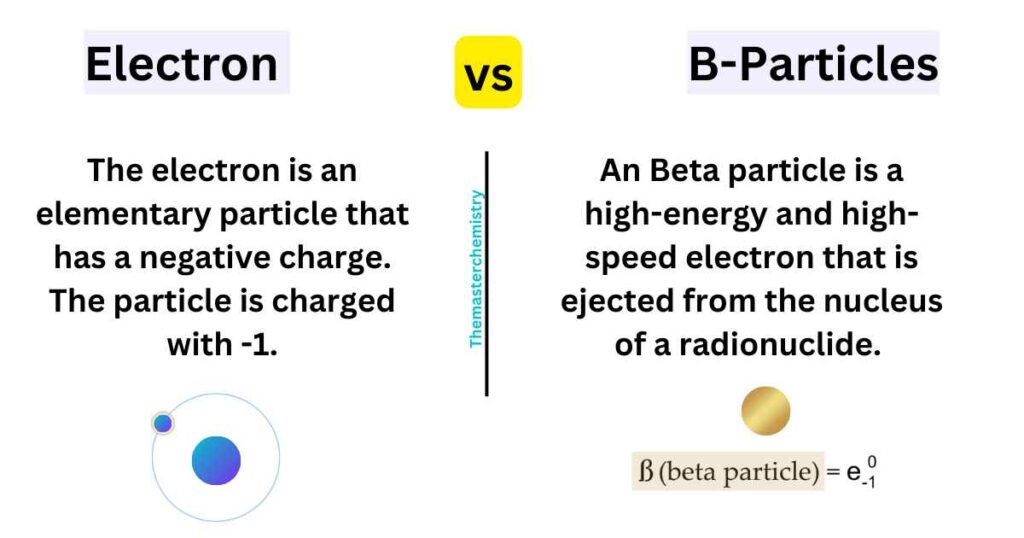The main difference between an electron and a beta particle is that the electron is negatively charged while the beta particle can either be charged or not. The term elementary particles refer to particles with no structure. These particles cannot be separated into smaller parts. There are particles such as electrons and quarks.

What is an Electron?
Table of Contents
The electron is an elementary particle that has a negative charge. The particle is charged with -1. It is a fermionic and first-generation particle and it shows activity in gravity. An electron is considered an antiparticle of a positron. The first theory about the electron was written in the mid-eighties. J.J.Thomson made the discovery of an electron.
Major subatomic particles are protons and neutrons, and an electron occurs in an atom as a particle. The mass of an electron is usually about 1836 times smaller than the mass of protons. When we consider the quantum mechanical properties of an electron, it has a 12 value and can be expressed in units of reduced Planck constant.
According to Pauli’s exclusion principle, no two electrons can be in the same quantum state, because electrons are fermions. Similar to all other elementary particles, electrons can behave as both a wave and particle.
This means that electrons can collide with other particles and that light can diffract. Electricity, magnetism, chemistry, and thermal conductivity are some of the phenomena in which electrons play an essential role.
The electric field around them is caused by the charge of the electrons. In addition, electrons are involved in many different applications, including photoelectricity, electron microscope, radiation therapy, laser, and many more.
What is a Beta Particle?
An beta particle is a high-energy and high-speed electron that is ejected from the nucleus of a radionuclide. The symbol for the particle is β. We call this type of beta decay.
The is a particle that can be β decay and β+ decay. The energy of a particle is a bit low. There is a range of meters. The distance depends on the energy of the particle The particles are more likely to come under ionizing radiation than the rays. It is less harmful than alpha particles.
The power of penetration can be lower if the effect is higher. beta has moderate penetrating power and a moderate ionizing power. A few millimeters of aluminum can stop a particle. It doesn’t mean we can’t completely shield the rays from the sheet. These rays can slow down the matter.
What is the Difference Between Electron and Beta Particle?
The key difference between an electron and a beta particle is that an electron is negatively charged, whereas a beta particle can be either positive or negative charged. Particles that are important in elementary particles are electrons and alpha particles.
There are particles formed in the radioactive decay of the unstable atomic nucleus. No electrons can be found in the nucleus, so the electron is already in the atom.
See the table below to know difference between Electron and Beta Particle:
| Characteristic | Electron | Beta Particle |
|---|---|---|
| Charge | Negatively charged (-1) | Can be charged or uncharged |
| Structure | Elementary particle with no structure | Emitted from the nucleus of a radionuclide |
| Mass | About 1836 times smaller than the mass of protons | Varies depending on the specific beta particle |
| Type of Decay | N/A | Beta decay (β- decay) or positron decay (β+ decay) |
| Penetration Power | Low | Moderate |
| Ionizing Power | Moderate | Moderate |
| Shielding | Can be shielded with a few millimeters of aluminum | Can be slowed down by matter |
| Applications | Electricity, magnetism, chemistry, thermal conductivity, etc. | N/A |